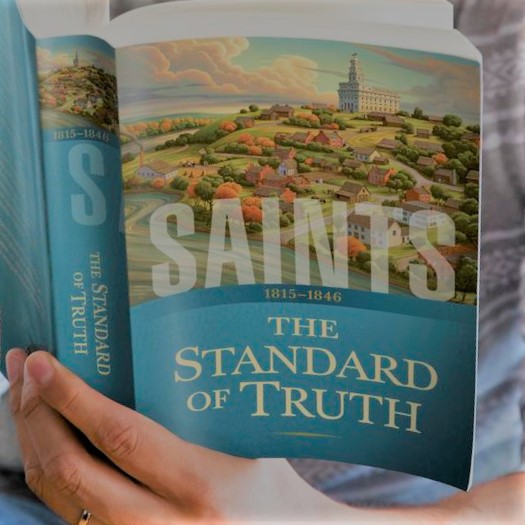S A I N T S: CAREFULLY MELDING THE OCCULT INTO HISTORY…
“Like many people in the area, including his father, Joseph believed that God could reveal knowledge through objects like rods and stones, as He had done with Moses, Aaron, and others in the Bible. One day, while Joseph was helping a neighbor dig a well, he came across a small stone buried deep in the earth. Aware that people sometimes used special stones to search for lost objects or hidden treasure, Joseph wondered if he had found such a stone. Looking into it, he saw things invisible to the natural eye.”
Saints: The Standard of Truth 1815-1846 (Salt Lake City, UT: The Church of Jesus Christ of Latter-day Saints, 4 September 2018), 3:21.
Since the slightly more candid admission by the church (via the JSP and on-line essays) of Joseph’s seer stone use, the church has been reticent to present the notion in a broader setting, until now.
The paragraph listed above is clumsy at best, yet crafty in its ability to throw off the scent to the faithful of how absurd the notion is of translating scripture by using a rock in a hat.
Let’s dissect the deception…
In a flagrant attempt to place blame elsewhere, the church shifts the original belief system in magic onto Joseph’s father and passages in the Bible. the footnotes do not go directly through the Bible, but circumvent the information via the Book of Mormon, D & C, and Joseph the Seer:
“The young Joseph Smith accepted such familiar folk ways of his day, including the idea of using seer stones to view lost or hidden objects. Since the biblical narrative showed God using physical objects to focus people’s faith or communicate spiritually in ancient times, Joseph and others assumed the same for their day.”
see https://www.lds.org/ensign/2015/10/joseph-the-seer?lang=eng&_r=1
Note the use of the term “folk ways” to avoid the less-favorable definitions of magic, divination, occult, or paganism. The author mentions that Joseph “accepted” this but doesn’t commit fully to the idea that they are divine, until coupling them with the Bible.
As miraculous as these ‘mostly’ Old Testament settings are, no Biblical references are presented to justify the use of a stone to translate ancient records. Since no such verse exists, no such claim can be made.
The final sentence from this passage in “Saints” is the one that is massaged the most to give it merit.
Joseph is “aware” that people claimed to “search for lost objects or hidden treasure” with stones. Awareness of this concept is then turned into the divine by stating “he saw things invisible to the natural eye.” Thus, confirming to the credulous that it all comes from God, and that the Bible, Moses, Joseph Sr., and even Captain Kidd are reliable resources to justify not only his use of the stone to translate the Book of Mormon, but as a prelude, to off-handedly admit that Joseph’s divine powers (even if unsuccessful) extended to the fraudulent years ahead in searching for treasure.
RE-rewrite: “Like many people in the area, including his father, Joseph believed that God could reveal knowledge through objects like rods and stones. One day, while Joseph was helping a neighbor dig a well, he came across a small stone buried deep in the earth. Aware that people sometimes used special stones to search for lost objects or hidden treasure, Joseph wondered if he had found such a stone. For the next few years, Joseph would use the stone in tandem with animal sacrifices and other occult rituals, to unsuccessfully hunt for buried treasure and precious metals, until realizing the main purpose of the seer stone would be for translating ancient texts.”

